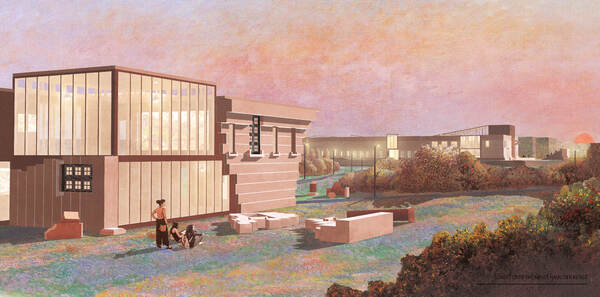For the past two years of my Masters, I have been exploring the role of memory in architecture, particularly in the context of my prefered specialism of Conservation. In my first year, I based my dissertation around the role of memory in determining the treatment of architecture which has suffered ruination by humans, nature and time. In my second year, I then used this research in order to create a proposal for one of my case studies - the Haus Der Kunst.
Over the last 70 years, the Haus Der Kunst in Munich has become increasingly disconnected from society due to its contentious Nazi origins. Designed and built by the Third Reich in 1937, the building was used to highlight classical Great German Art whilst other movements such as Impressionism were labelled as Degenerate, excluded from the gallery, and ridiculed in a separate exhibition. In 2017 David Chipperfield Architects won a competition to redesign the museum, however the proposal – which included removing the trees currently concealing the front façade - was met with hostility by the public. Whilst the memory of the building needed to be preserved so that visitors can remember and learn from the past, maintaining the building as a whole would ensure that it still remained a void within the city – unapproachable and unable to move into the future.
This project explores an alternative path the Haus Der Kunst could take in order to overcome its past by using the art it had once excluded to subvert its narrative and dismantle its monumentality, in the process finding a balance between memory and void. Whilst highlighting the 'degenerate' art, this proposal also puts a spotlight on the 5 million artworks and pieces of cultural property which remain missing since WWII. For further information on this, please see The Monuments Men Foundation.


